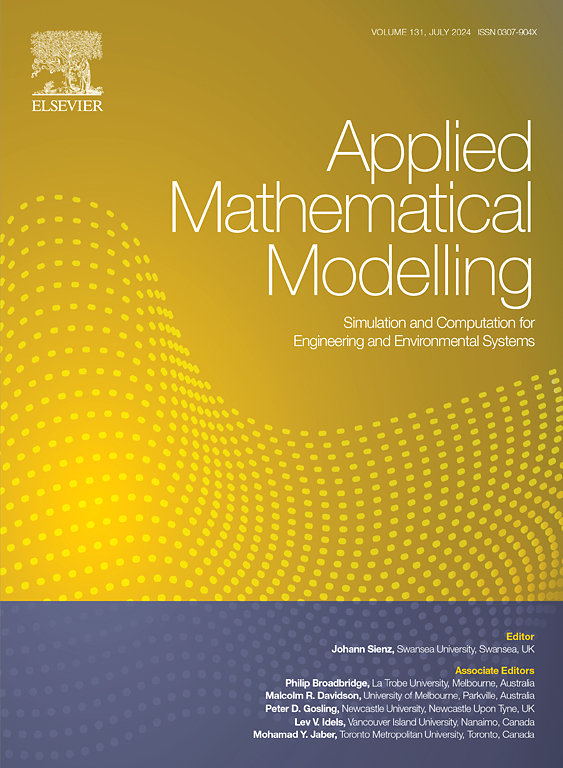Exact solutions for anisotropic beams with arbitrary distributed loads
IF 4.4
2区 工程技术
Q1 ENGINEERING, MULTIDISCIPLINARY
引用次数: 0
Abstract
The general solution of elasticity for plane anisotropic beams with arbitrary constraints at ends and arbitrary normal and tangential distributed loads on surfaces is derived, which consists of internal forces (i.e., bending moment, shearing force, axial force) and their integrals and derivatives of different orders and load-independent polynomial function sequences of longitudinal coordinates. The method for determining the function sequences is established by resolving the governing equation and boundary conditions of the stress function method. For beams with an elastic symmetry plane, a method for directly determining explicit expressions for all terms of function sequences is provided. Particular solutions of examples are solved using general solution formulas, and the results align excellently with existing exact solutions. Finally, the errors in EBT and TBT when applied to beams made of different materials are analysed.
具有任意分布荷载的各向异性梁的精确解法
推导了两端有任意约束、表面有任意法向和切向分布载荷的平面各向异性梁的弹性通解,它由内力(即弯矩、剪力、轴力)及其不同阶的积分和导数以及与载荷无关的纵坐标多项式函数序列组成。确定函数序列的方法是通过解决应力函数法的控制方程和边界条件来建立的。对于具有弹性对称面的梁,提供了直接确定函数序列所有项的显式表达的方法。使用一般求解公式求解了示例的特定解,结果与现有的精确解非常吻合。最后,分析了 EBT 和 TBT 应用于不同材料梁时的误差。
本文章由计算机程序翻译,如有差异,请以英文原文为准。
求助全文
约1分钟内获得全文
求助全文
来源期刊

Applied Mathematical Modelling
数学-工程:综合
CiteScore
9.80
自引率
8.00%
发文量
508
审稿时长
43 days
期刊介绍:
Applied Mathematical Modelling focuses on research related to the mathematical modelling of engineering and environmental processes, manufacturing, and industrial systems. A significant emerging area of research activity involves multiphysics processes, and contributions in this area are particularly encouraged.
This influential publication covers a wide spectrum of subjects including heat transfer, fluid mechanics, CFD, and transport phenomena; solid mechanics and mechanics of metals; electromagnets and MHD; reliability modelling and system optimization; finite volume, finite element, and boundary element procedures; modelling of inventory, industrial, manufacturing and logistics systems for viable decision making; civil engineering systems and structures; mineral and energy resources; relevant software engineering issues associated with CAD and CAE; and materials and metallurgical engineering.
Applied Mathematical Modelling is primarily interested in papers developing increased insights into real-world problems through novel mathematical modelling, novel applications or a combination of these. Papers employing existing numerical techniques must demonstrate sufficient novelty in the solution of practical problems. Papers on fuzzy logic in decision-making or purely financial mathematics are normally not considered. Research on fractional differential equations, bifurcation, and numerical methods needs to include practical examples. Population dynamics must solve realistic scenarios. Papers in the area of logistics and business modelling should demonstrate meaningful managerial insight. Submissions with no real-world application will not be considered.
 求助内容:
求助内容: 应助结果提醒方式:
应助结果提醒方式:


